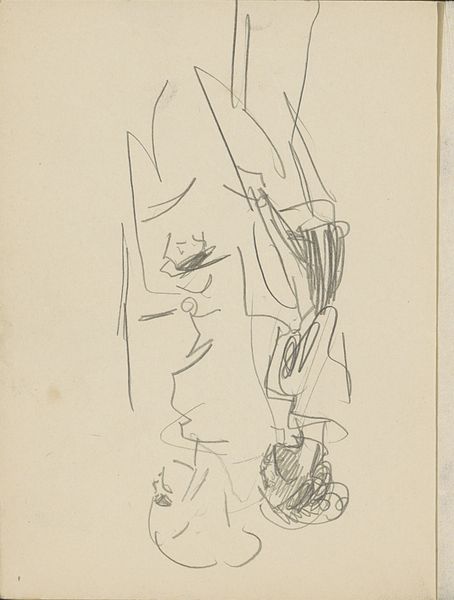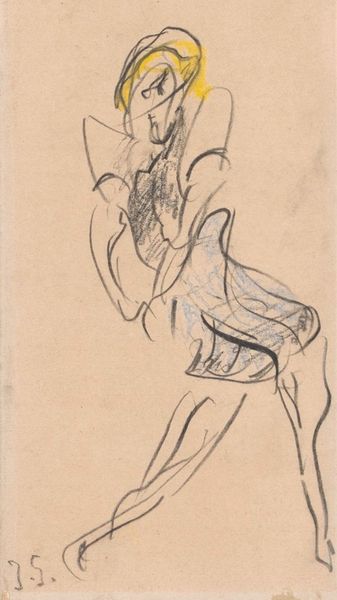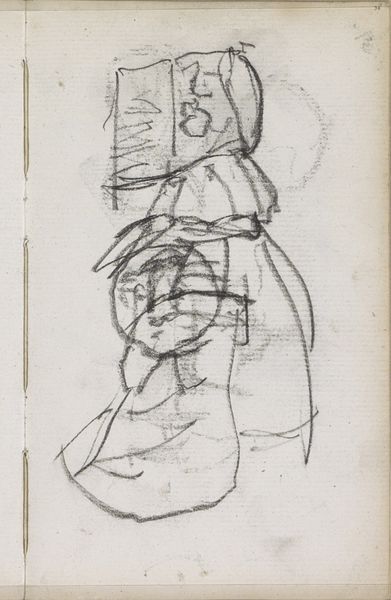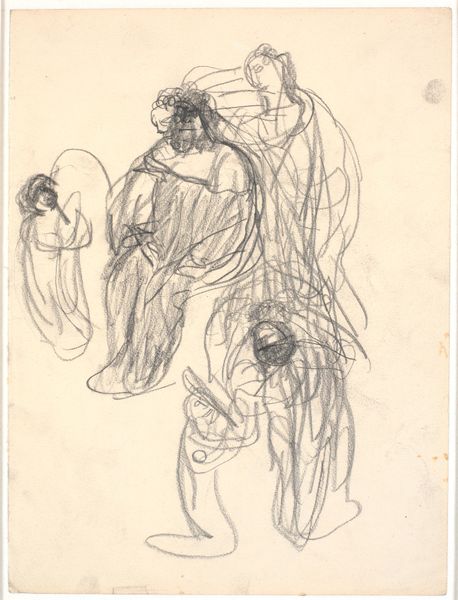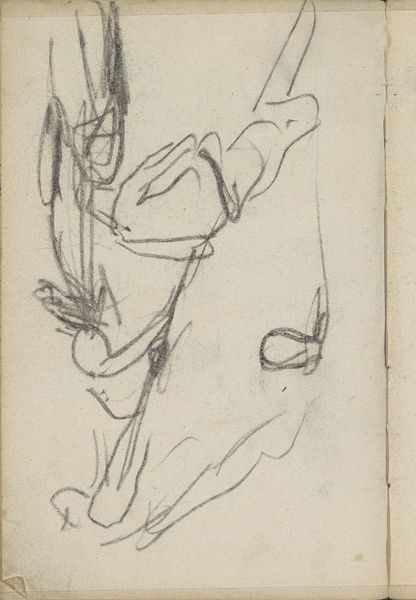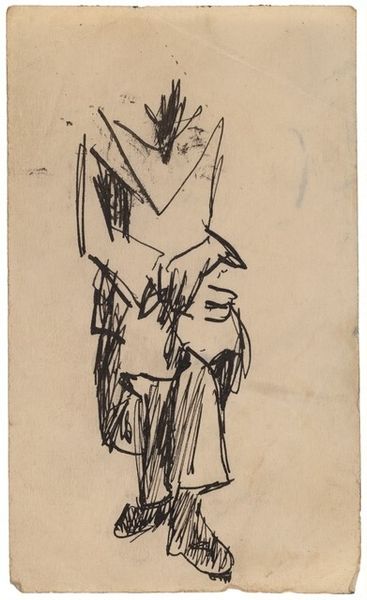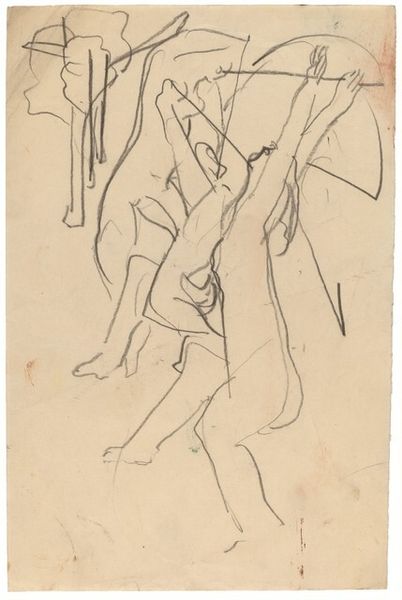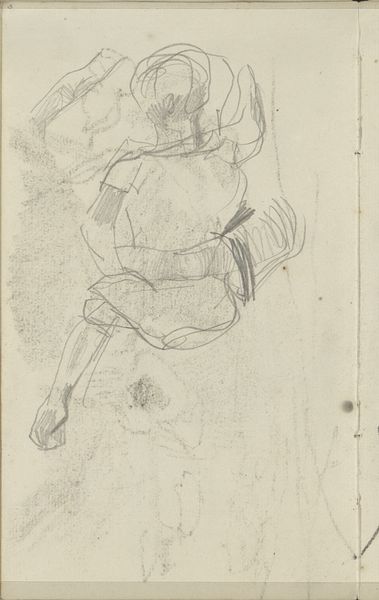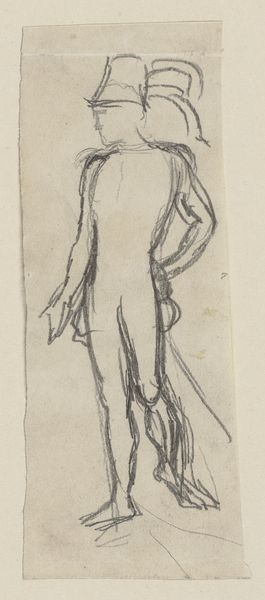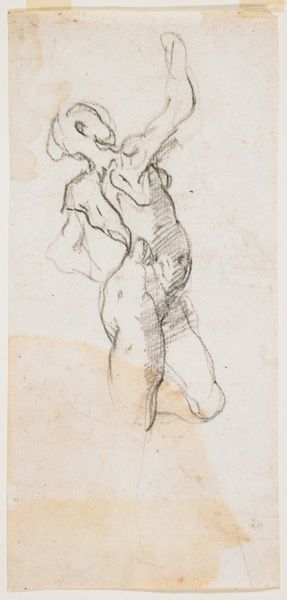
drawing, pencil
#
drawing
#
figuration
#
pencil
#
expressionism
Dimensions: 230 mm (height) x 147 mm (width) (bladmaal)
Curator: Well, this drawing, titled "To nøgne mænd, der brydes," or "Two Naked Men Wrestling," was created by Karl Isakson sometime between 1904 and 1909. It's a pencil drawing currently held in the collection of the SMK - Statens Museum for Kunst. Editor: My initial impression is one of raw energy and tension. The sketchy lines give it a sense of immediacy, as if we're witnessing a fleeting moment of physical struggle. It’s brutal, really. Curator: The immediacy you observe aligns with Isakson's exploration of human form and movement through his choice of, say, a readily accessible medium like pencil. Think of the social implications - wrestling was emerging as a professional, working-class sport, gaining popularity in arenas and music halls at the time. Did this inform his artistic license? Editor: It's intriguing to consider the drawing within that historical context. We could ask how this image plays into or subverts dominant representations of masculinity. Were these matches about to erupt? Were there stakes involved? The intensity here certainly transcends pure physicality. Curator: Indeed. The physicality emphasizes the constraints and pressures that can come from class based forms of entertainment. Furthermore, the choice to depict them nude makes it stand out as far as common practices in the wrestling scenes of the day. The roughness almost mimics the unrefined elements associated with working class citizens who comprised that audience. Editor: And beyond just class dynamics, consider the power dynamics inherent in wrestling itself. Who's in control? Whose body is vulnerable? Who decides what to broadcast on social media for increased view? There is a socio-economic interplay here as well. Curator: Certainly. Isakson isn't merely representing bodies in motion; he is perhaps exploring themes of control, power, and the societal forces that shape both individual expression and our gaze upon such interactions. Editor: A fresh perspective that might change how we consider what constitutes spectacle and even challenge those definitions within the broader artistic climate of that period. It seems there is something un-orthodox and untamed at play here. Curator: Well said! It challenges many conventional viewpoints around production practices for expressing figures through art. Editor: Absolutely. Hopefully we gave some other perspectives into Isakson's unique expression that viewers might also have felt when viewing.
Comments
No comments
Be the first to comment and join the conversation on the ultimate creative platform.



